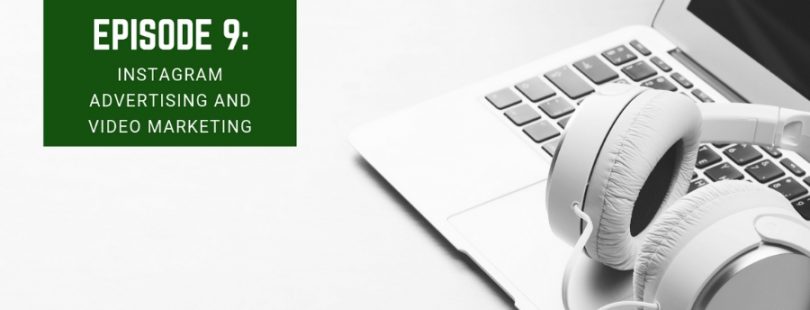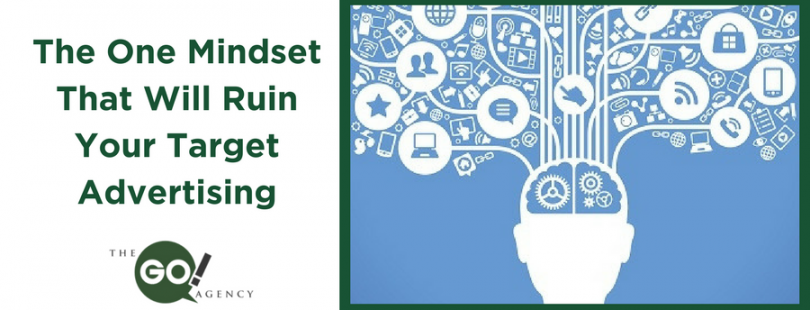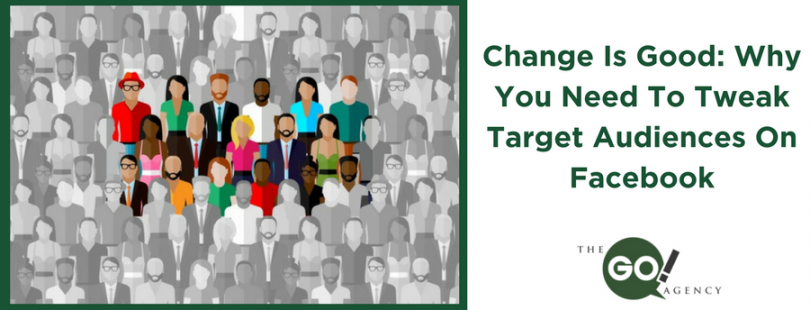Something that has come up again and again over the 11 years we have been executing campaigns for our clients at The Go! Agency, is a fairly obvious topic: clients and their target audiences.
This extremely crucial element, while seemingly simple, is often a missing piece of the puzzle, that many business owners struggle to identify, and may sometimes appear out of reach to nail down.
The typical answer we get to the question of target (or ideal) audiences is “anyone with money.” While I agree that this may be ideal, it is not exactly what we are trying to define here. A truly defined target market can literally make or break a solid marketing and sales strategy.
So how do you figure it out? How do you shake out the information that you already have about the kind of people who do business with you, and find your target audience from there?
This is exactly where I would begin.
Current Clients
If you are a company that has been in business for a period of time, the first place that I would go to look when (re)developing a target audience would be your current client base. What commonalities do your current clients have? Pull your current client list and take a close look at the data. Whether you have three clients or three thousand, you should be able to draw some similarities among your clients and customers. Look at everything from industry, company size, order size, geographical location, the title of contact on the contract/order, and more.
Depending on the number of reports that you have, you can find more qualified data than you think. Many people want to shoot for the stars with an ideal target audience based on dream scenarios, but looking at the trends you can draw from your own clients is best. These people chose you. They have given you money. These are the type of people that you should aim for.
Also, look to see how these people found you. This is crucial information when you begin to create your marketing campaign.
Prospects/Non-Closed
You should also have access to a list of past and other non-closed customers/clients. This is another often overlooked part of the whole system of (re)defining your target audience. Take a look at the data with these as well, and see if you can find more commonalities. Perhaps many of these clients didn’t close due to price. This might lead you to develop a new target audience (or sub-target audience) that you could create a more affordable package/product for. Don’t forget to also add where these people found you as it, again, will be useful when you begin to develop your marketing strategy. Try your best to identify what this group of people have in common. Remember too, knowing who your target customer isn’t is just as important.
Competitors
Are you a new business in the launching or pre-market stage? You MUST do your market research early, to not only prove the viability of your business but also find the audience in which you should begin to invest your marketing and sales dollars. Would your customer base spend more time on a specific social network? Do your potential customers prefer reading short social media posts, or long-form blog posts? Honestly, this is a lot of work, and you may have to do a full competitor analysis in order to complete this process (including signing up for the competitors’ newsletters and secret shopping to see how they serve their audience). Ignoring your competition, especially your successful competition, is a rookie mistake.
I tell you this because I have seen many companies latch onto a successful product or service concept, but never truly have a clear idea of their target audience. The result was off-market branding, poor targeting, low sales, and lots of marketing dollars wasted.
Website Visitors
Utilizing Google Analytics you can get an idea of where people are finding you online AND what they are looking for on your website.
Another great tool is our Web Wisdom AI – which is a plugin to your website that grabs all of the visitors to your website and sends you a report on each one of them in real-time. This valuable tool has enabled some of our clients to learn more than Google will allow in terms of the target audience. For example, one of our agency’s clients was targeting the entertainment field, but with this service, they realized that all of their website traffic was coming from financial organizations. When they found this out, they pivoted their approach and developed materials that were suitable to target this newly developed audience!
Now What?
Now you should jog over to LinkedIn Sales Navigator (another highly recommended service) to do a prospect search. Take the time to fill out all of the search fields within LinkedIn Sales Navigator – this should help you really define your target audience.
Looking more for B2C? Utilize the same process by looking at the demographics for Facebook Advertising. It is another great tool to help you remember the main factors that make up a target audience.
Redefining and re-examining your target audience is vital to making informed decisions and ensuring that your sales and marketing efforts are not wasted. If you’re struggling with crafting a message that your target audience is most likely to respond to or resonate with, don’t hesitate to reach out to my team of sales and marketing professionals at The Go! Agency. Every day, we help businesses across a broad range of industries fine-tune their audiences and marketing messages.
Read More











